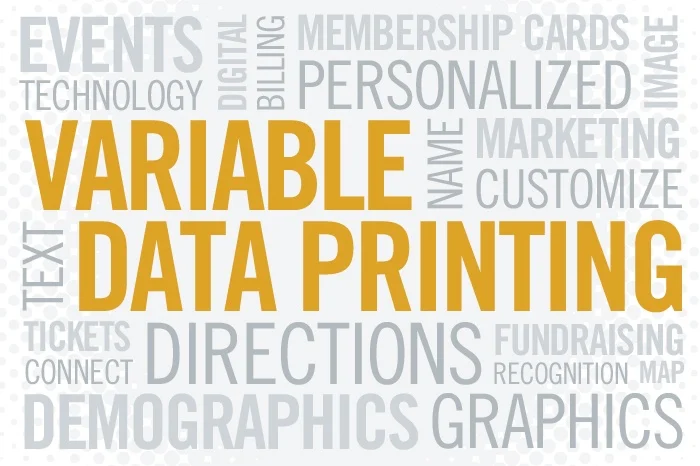
In today’s competitive marketing world, customization is no longer a luxury—it’s an expectation. Whether you’re a marketing manager directing multi-touch initiatives or a company owner trying to enhance conversions, Variable Data Printing (VDP) offers a powerful means to generate highly targeted, one-to-one print communications at scale.
Variable Data Printing is a form of digital printing that allows elements such as text, images, graphics, offers, and even barcodes or QR codes to change from one printed piece to the next, without slowing down the printing process.
This technology transforms static communications into meaningful, customized experiences by allowing you to customize each mailer based on unique client data, such as name, location, past purchases, or behavioral insights. Simply put, you can send 10,000 unique postcards, each tailored to the recipient, rather than 10,000 identical ones.
Here’s how the variable printing process typically flows:
| Step | What Happens |
| 1. Data Collection | Gather data from your CRM or customer database (e.g., names, zip codes, purchase history). |
| 2. Design Template | Create a print layout with dynamic fields (like [First Name], [Location], [Favorite Product]). |
| 3. Data Merge | VDP software merges your data with the template, automatically generating customized prints. |
| 4. Digital Printing | The system prints each piece with its unique data in one seamless, high-speed print run. |
| 5. Mailing & Delivery | The personalized prints are mailed directly to recipients for timely delivery. |
VDP can be applied across industries—retail, real estate, and nonprofits. Here’s how it looks in action:
| Industry | Use Case | Variable Elements |
| Retail & eCommerce | Abandoned cart follow-up | Name, items left in cart, special discount |
| Real Estate | Just-listed mailers | Property photo, agent info, recipient’s neighborhood |
| Franchises | Localized promotions | Store location, hours, custom offers |
| Healthcare | Patient reminders | Name, appointment date, provider contact |
| Education | Enrollment campaigns | Student name, degree interest, campus location |
| Nonprofits | Donation appeals | Donor name, last donation, personalized message |
These aren’t just “nice-to-have” touches—they significantly boost performance.
Compared to non-personalized print, VDP can boost response rates by two to five times. 42% of customers are more inclined to interact with direct mail that seems relevant to them, per a 2024 survey conducted by the Direct Marketing Association.
Effective use of variable printing reduces cost per acquisition and increases conversions. ROI gains of at least 135% are common for campaigns that use personalization.
Your brand feels more relevant and connected when it speaks directly to the interests, routines, or location of the receiver, which fosters trust and enduring loyalty.
Even for tiny, highly targeted mailings, VDP is affordable due to its digital nature, making it perfect for segmented campaigns or A/B testing.
Here’s what you can change with VDP:
| Variable Element | Examples |
| Text | Names, cities, job titles, and past purchases |
| Images | Local landmarks, product photos, demographic-specific visuals |
| Offers | Coupon codes, custom discounts, reward points |
| QR Codes | Trackable links that lead to personalized landing pages |
| URLs | Personalized web addresses (e.g., [YourName].BrandPromo.com) |
These professional suggestions can help your VDP campaign stand out:
The changeable data printing offered by Print Mail Direct is perfect for:
Print Mail Direct helps you manage your printing, targeting, and mailing on a single platform if you’re juggling several providers or finding it difficult to get quantifiable results.
We can streamline your customised printing campaigns in the following ways:
Variable Data Printing is about connection, not simply personalization. The personalization power your audience expects is provided by VDP, whether your goal is to improve direct mail ROI, strengthen client connections, or optimize your campaign process.
Let Print Mail Direct show you how to turn data into results.